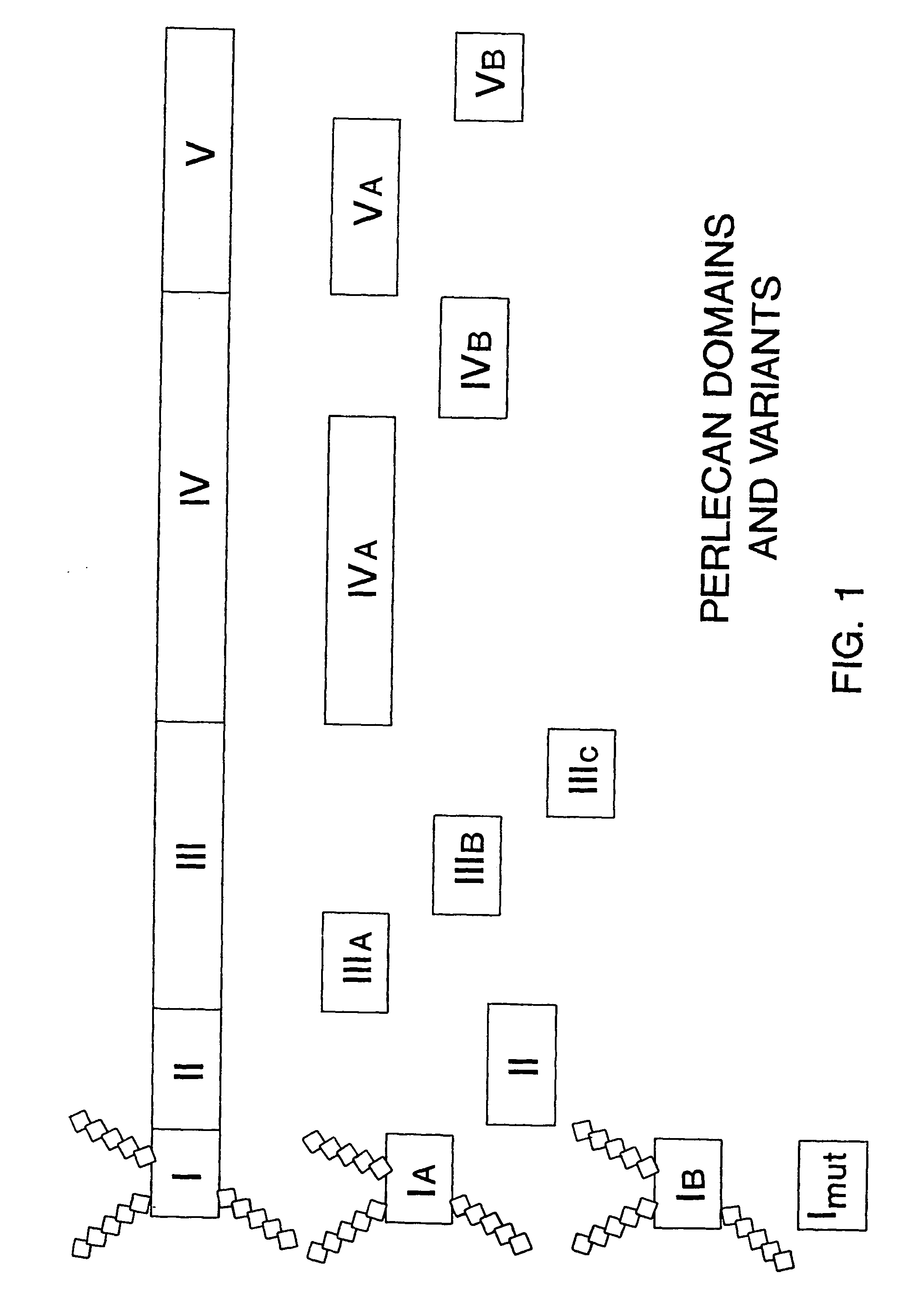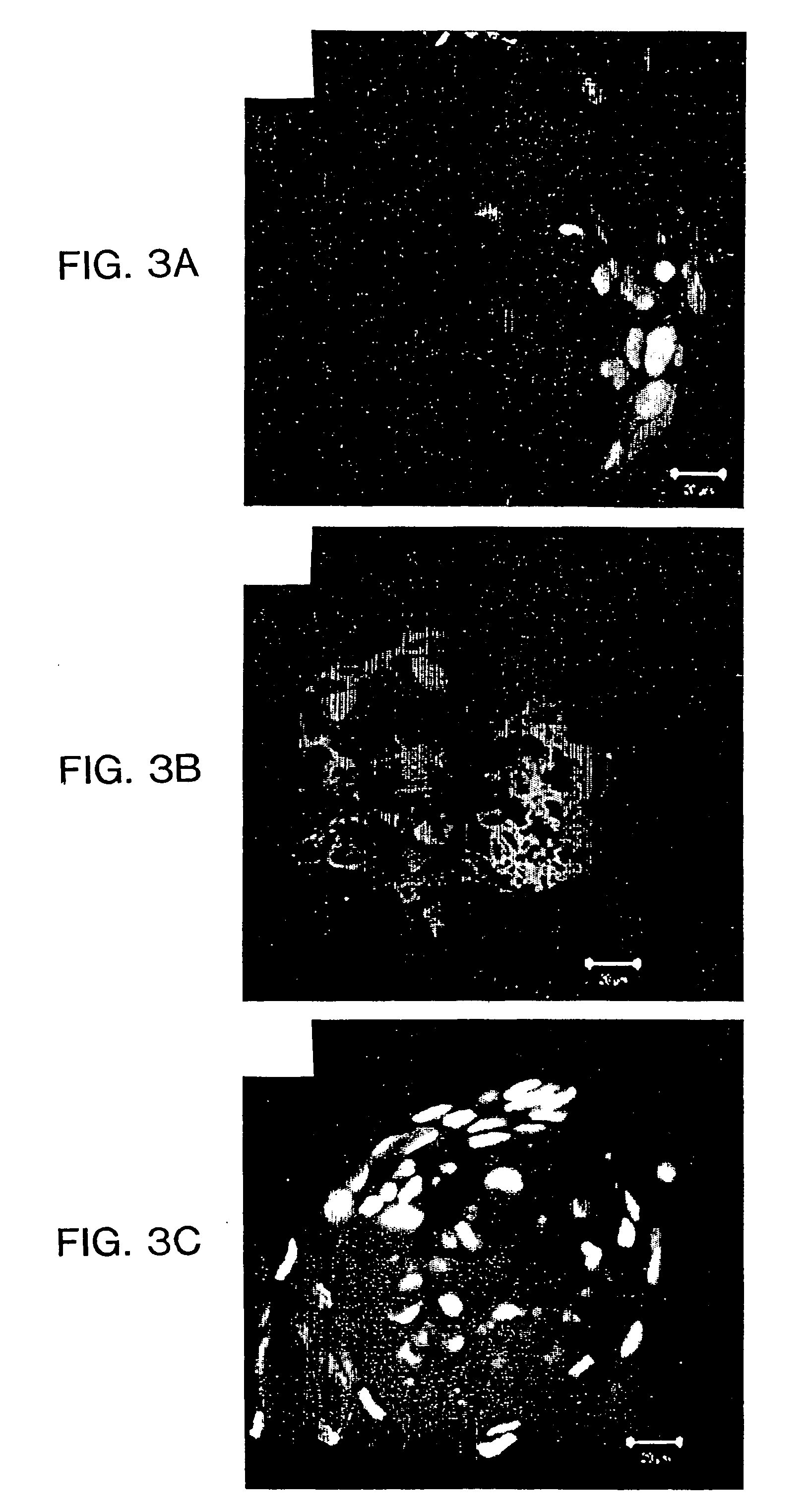Delivery system for heparin-binding growth factors
a technology of growth factor and delivery system, which is applied in the direction of prosthesis, peptide/protein ingredients, drug compositions, etc., can solve the problems of defective endochondral ossification, large amount of inventive proteoglycan production, so as to achieve enhanced tissue recovery
- Summary
- Abstract
- Description
- Claims
- Application Information
AI Technical Summary
Benefits of technology
Problems solved by technology
Method used
Image
Examples
example 1
[0043] Materials and Methods
[0044] Materials
[0045] Pln / HSPG2 was obtained from Becton-Dickinson Labware (Bedford, Mass.). The rabbit polyclonal antibody against rat aggrecan was provided by Dr. Kurt Doege (Shriner's Hospital for Children, Portland Unit). The rabbit anti-mouse antibody against type X collagen (PXNC1-88) was provided by Dr. Greg Lunstrum (Shriner's Childrens Hospital, Portland, Oreg.) The rabbit IgG antibody against mouse type II collagen was purchased from Biodesign International (catalog # T40025R). Species-specific, Texas-Red conjugated secondary antibodies were purchased from Amersham Corporation (Arlington Heights, Ill.).
[0046] Immunofluorescent Detection of Extracellular Matrix Components
[0047] After culture upon matrix for 6 or 9 days, cell aggregates and monolayers were rinsed twice with Dulbecco's phosphate buffered saline (D-PBS) without calcium or magnesium. The specimens were subsequently fixed, washed 3 times (5 minutes at room temperature) with D-PBS and...
PUM
| Property | Measurement | Unit |
|---|---|---|
| Fraction | aaaaa | aaaaa |
| Fraction | aaaaa | aaaaa |
| Atomic weight | aaaaa | aaaaa |
Abstract
Description
Claims
Application Information
 Login to View More
Login to View More - R&D
- Intellectual Property
- Life Sciences
- Materials
- Tech Scout
- Unparalleled Data Quality
- Higher Quality Content
- 60% Fewer Hallucinations
Browse by: Latest US Patents, China's latest patents, Technical Efficacy Thesaurus, Application Domain, Technology Topic, Popular Technical Reports.
© 2025 PatSnap. All rights reserved.Legal|Privacy policy|Modern Slavery Act Transparency Statement|Sitemap|About US| Contact US: help@patsnap.com



